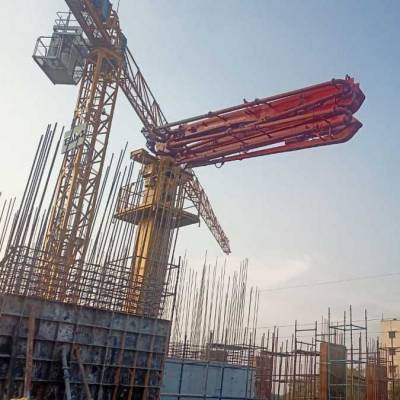

India’s per-capita consumption of cement is roughly half the global average of 500 kg, and way behind neighbouring China’s 1,750 kg. So, there’s massive scope for growth in the cement sector and, correspondingly, in the associated concrete industry. Here, CW profiles a few users of core concrete equipment who are committed to getting the most out of their machines.
“We recently deployed 60cum/hr and 30cum/hr batching plants and 32-m static concrete placers for the construction of a LNG tank in Dhamra, Odisha,” shares Munish Taneja, Executive Director, Indiabulls Store One, a leading rental player in the Indian market.
“To ensure that the machines functioned optimally and delivered maximumproductivity, our operation team followed the preventive maintenanceschedule prescribed by the OEM, used good quality spares andconsumables, inspected the equipment every week to identify wear/tearof critical items, provided trained operators with the equipment, and opted for models with highly advanced technology,”he adds. “While a strong operations team capable of managing critical sites canhelp manage challenges, the biggest challenges we have faced in theoperations of concreting equipment are poor quality mix or high-gradeconcrete supplied by customers, which leads to choking of boom placers/concrete pumps, lack of trained operators, the hightransportation and installation cost of the concrete batching plantowing to the size of various components, maintenance and upkeep ofthe equipment during idling, and the high maintenance cost ofconcreting equipment, mainly due to many wear parts like mixing drumliners, concrete pipes and chutes.”
“In constructing the Mumbai Metro Rail, we usually used boom placers as these are suitable for placing concrete upto the required height and radius (unlike high-rise buildings where the boom falls short),” shares Pramod B Joshi, Additional General Manager (P&M Head, All India), Ahluwalia Contracts India. “We used a 36-m boom, although in some instances contractors used a 43-m boom. For metro construction, concrete boom placers work better than stationary concrete pumps, especially when the quantity of concrete involved is limited. Boom placers are easier to use and shift to the next job.”